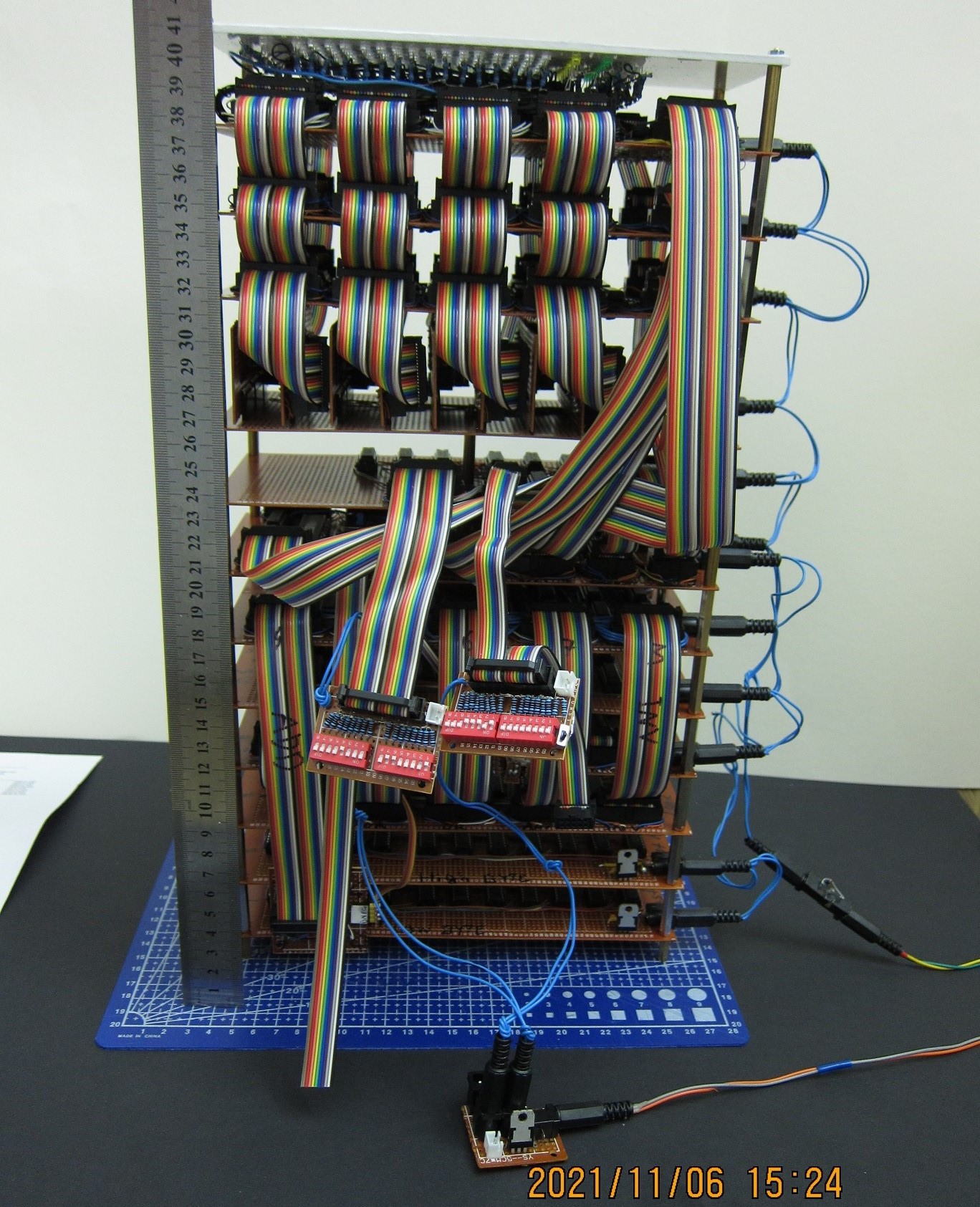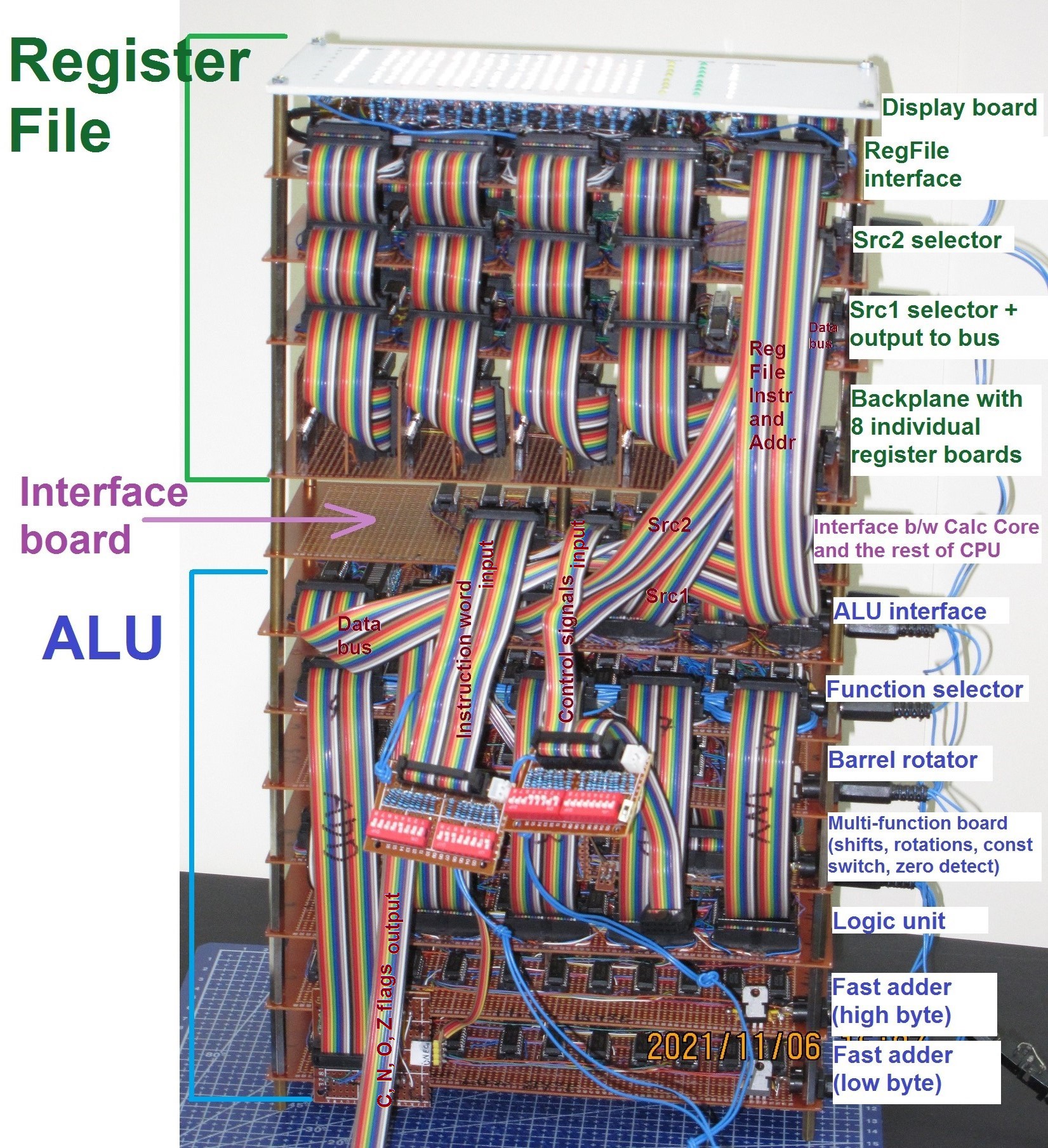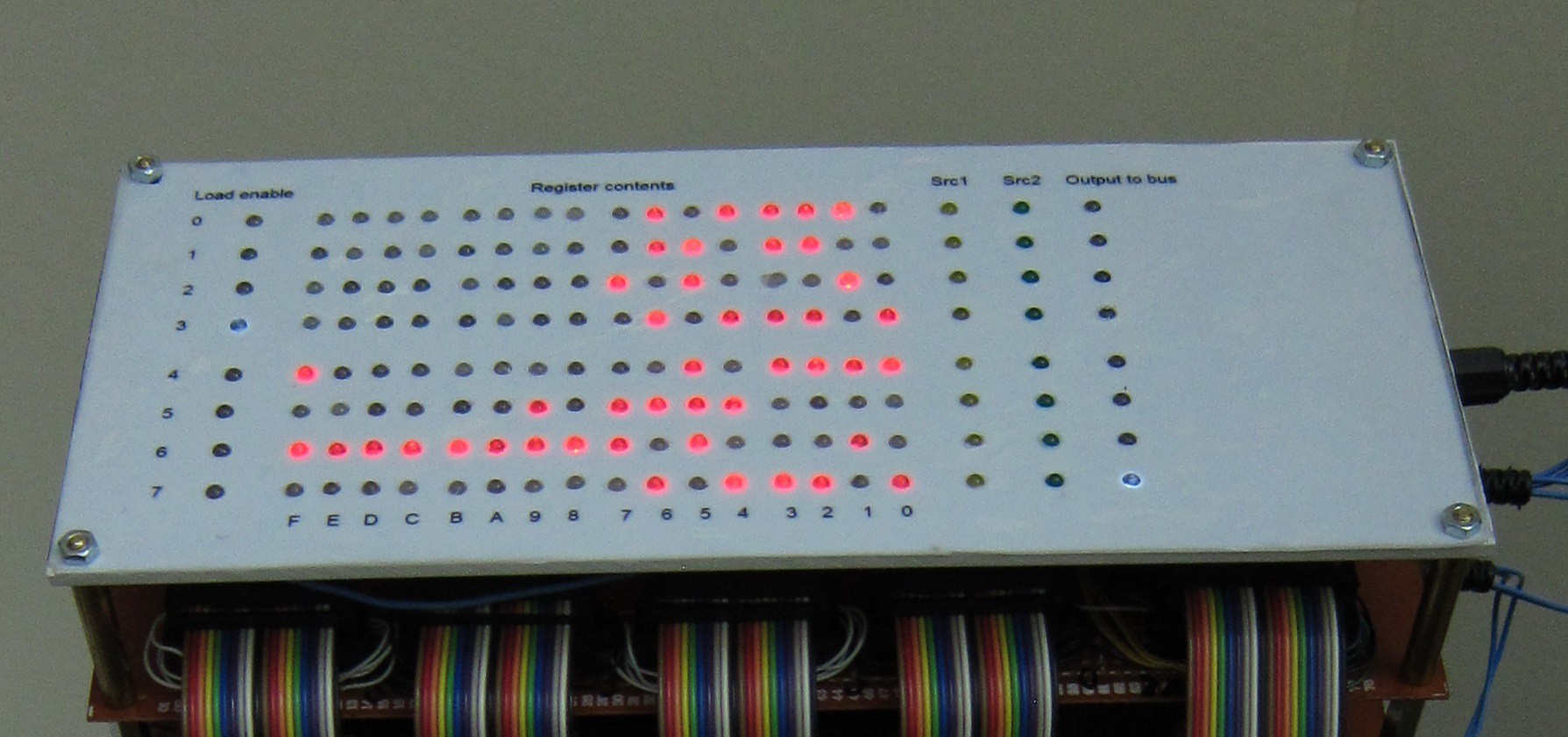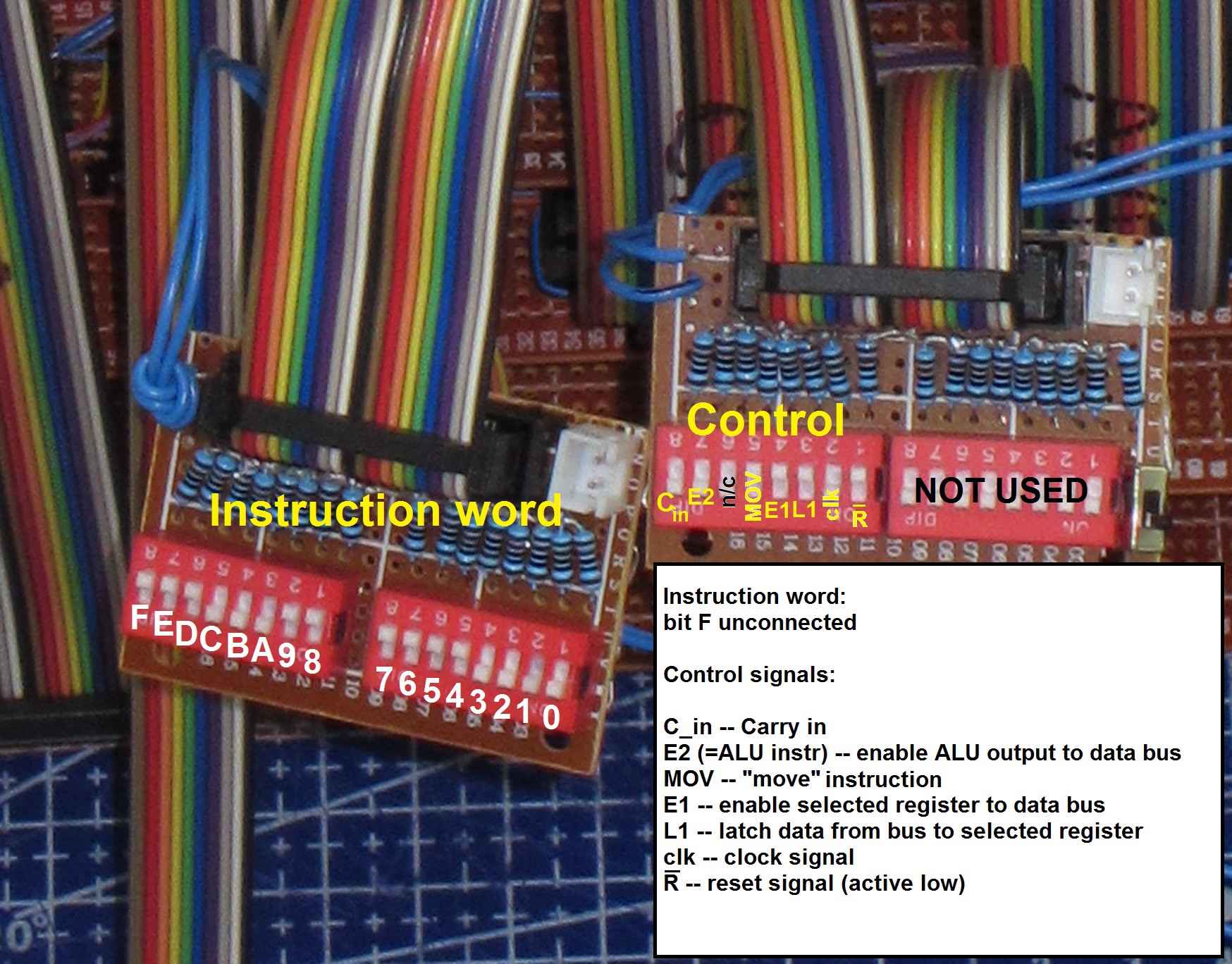Current state of affairs:
The full stack for calculating core (ALU + Register File + Interface board) of this CPU is completed! And it is circa 40 cm high!

After completing the interface board back in August, I've stacked this whole thing for the first time. When I started testing it, something was odd -- the thing was working erratically, some instructions were working seemingly ok, some others worked erroneously, yet others weren't working at all. At the time I disassembled and assembled the stack several times, but haven't been able to weed off all the bugs, and after a while I've got interested in some other things.
Now, I've returned to this project, disassembled and took hard look at the boards comprising the Register File, took a good note of all the connectors, which signal gets to which wire, and found that in several places those wires were soldered to wrong inputs/outputs! Somehow this eluded me earlier. Anyway, after wiring bugs were sorted out, I've assembled it all, and now it seem to work ok. All the instruction types this Calculating Core is supposed to support are working ok, as far as I can tell.
Now, this is a milestone passed, and I have a device with which I can do real calculations, provided right sequence of instructions. For now, these instructions can only be entered manually, one by one via a couple of switch banks.
Plans for the next steps:
In the next few weeks I plan to make a provisional control unit, which together with the Calculating Core and HROM will make the automatic calculation machine. It will not be a full-fledged computer, but a milestone towards it. I call it Pilot-1 for the lack of better name.
Pilot-1 machine will have a 16-word ROM for its instructions, and will operate only on its 8 general purpose registers.
Supported instructions are all ALU instructions, the MOVs, and Jumps, conditional and unconditional. The latter ones are really needed to make maximum use out of only 16 instructions that can be inside the ROM.
This Pilot-1 thing will not have any conventional I/O, aside from reset button and clock switch. Luckily, instructions are entered via switches on ROM board, and results are visible on display board, this should look like impressive light show. Blinky lights, yay!
Pictures:
The Calculating Core board stack :

The Register Display board in action:

Current control interface:

 Pavel
Pavel
Discussions
Become a Hackaday.io Member
Create an account to leave a comment. Already have an account? Log In.